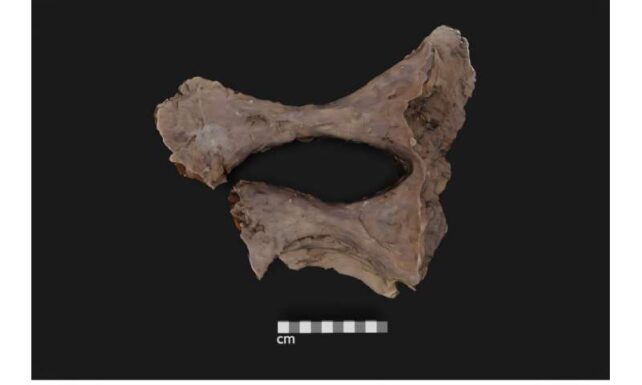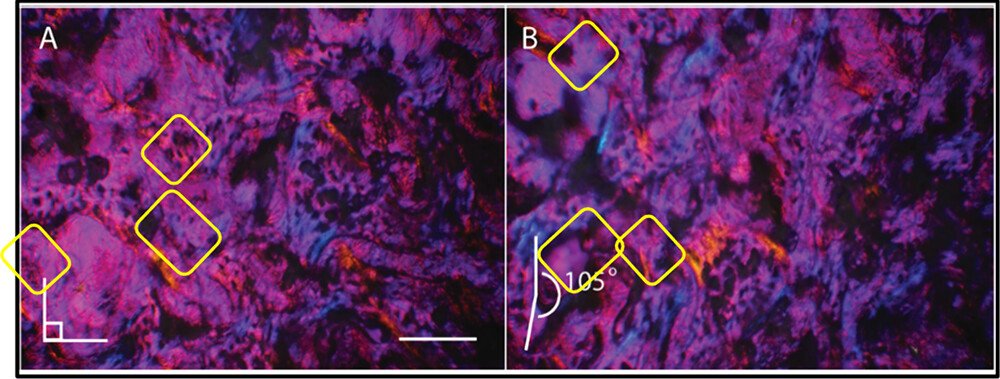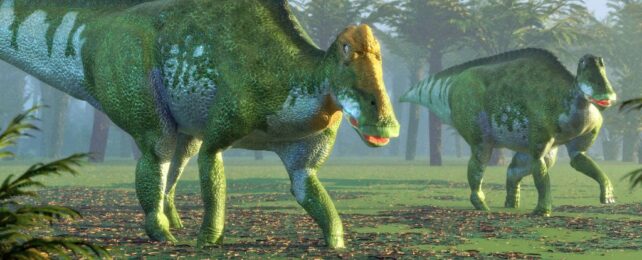Researchers have discovered clear chemical traces of decaying collagen in a duck-billed dinosaur fossil, upending previously held notions that any organic material found within such ancient fossils must be from some source of contamination.
"This research shows beyond doubt that organic biomolecules, such as proteins like collagen, appear to be present in some fossils," says University of Liverpool materials scientist Steve Taylor.
"Our results have far-reaching implications. Firstly, it refutes the hypothesis that any organics found in fossils must result from contamination."
The well-preserved fossil that was once a dinosaur's butt bone (sacrum) was excavated from South Dakota's Hell Creek Formation in 2019. It belongs to a species of Edmontosaurus, one of the last non-avian dinosaurs known to have ever existed.

These giant lizards, reaching up to 12 meters (39 feet) in length, were horny-beaked plant eaters that roamed alongside the infamous Tyrannosaurus rex and Triceratops during the late Cretaceous around 73 million years ago.
Collagen, the most common protein found in bones, has previously been associated with a hadrosaur's leg bone in 2009 and an arm bone of a T. rex in 2007, but such finds are contested by other researchers, who argue any original proteins would have been replaced by the fossilization process long ago.
So, University of Liverpool engineer Lucien Tuinstra and colleagues used three independent techniques, including cross-polarized light microscopy, to unambiguously identify and quantify decaying hydroxyproline, a unique building block of collagen.
"If the sequenced collagen is contamination by recent sources, then the sequence would be largely complete," the researchers argue in their paper.
But the team only found short sequences of the hydroxyproline amino acid, at low amounts, consistent with ancient and decayed collagen.

"Cross-polarized light microscopy images of fossil bones, collected for a century, should be revisited," suggests Taylor.
"These images may reveal intact patches of bone collagen, potentially offering a ready-made trove of fossil candidates for further protein analysis. This could unlock new insights into dinosaurs – for example revealing connections between dinosaur species that remain unknown."
The researchers also compared artificially aged collagen samples from a modern turkey and bovine, using liquid chromatography tandem mass spectrometry, and found no similarities with the Edmontosaurus sample.
"The findings inform the intriguing mystery of how these proteins have managed to persist in fossils for so long," says Taylor.
This research was published in Analytical Chemistry.
